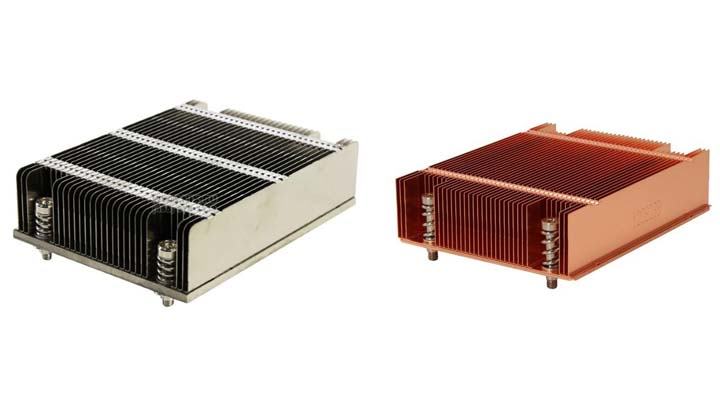Heat sinks are essential components in electronic devices, particularly those that generate a lot of heat, and the choice between an aluminum vs copper heatsink is a critical decision that can significantly impact the performance and efficiency of the device. However, selecting the appropriate material is only one factor when designing a heat sink. The primary design factors that impact the functionality and effectiveness of heat sinks will be discussed in this article.
Thermal Conductivity
Thermal conductivity is one of the most crucial factors when designing heat sinks. Higher thermal conductivity values indicate better performance concerning a material’s capacity to transfer heat. Copper has a thermal conductivity of about 400 W/mK, compared to about 200 W/mK for aluminium. As a result, copper is preferred for high-performance applications because it conducts heat more effectively than aluminium.
Fin Density
Heat must be dissipated from the device, and heat sink fins are essential. Greater heat dissipation is a function of higher fin densities, measured as the number of fins per unit area. Increasing air resistance may decrease a heat sink’s efficiency, which is another side effect of increasing fin density. Because of this, it’s critical to balance air resistance and fin density to achieve the best performance.
Fin Height
An additional crucial factor is the heat sink’s fin height. Taller fins are better at dissipating heat but also create more air resistance, reducing the heat sink’s efficiency. Depending on the particular application and the amount of heat that needs to be dissipated, the ideal fin height will be determined.
Base Thickness
Another crucial design factor is the thickness of the heat sink’s base. Although thicker bases may provide better heat dissipation, they can also make the heat sink heavier and larger, which may not be suitable for all applications. Therefore, it’s crucial to balance the advantages of a thicker base and the practical constraints of the gadget.
Area of Surface
The surface area of the heat sink is another important factor to consider. Increasing the amount of heat that can be dissipated and increasing the surface area of the heat sink can increase its efficiency. However, increasing the heat sink’s surface area can also increase its weight and size, which may not be suitable for all applications.
Thermal Interface Material
The substance between the device and the heat sink is known as the thermal interface material (TIM). Its main goal is to ensure the two surfaces have good thermal contact to maximise heat transfer. Thermal pastes, pads, and tapes are just a few of the numerous TIM types offered. To ensure optimal heat sin performance, choosing the right TIM is essential.
Airflow
Another vital element that impacts performance and efficiency is the airflow around the heat sink. Increasing the airflow can improve heat dissipation, but it can also increase the noise generated by the device. Therefore, balancing the advantages of increased airflow and the device’s practical constraints is crucial.
Mounting Mechanism
The heat sink is fastened to the apparatus using the mounting mechanism. The mounting mechanism should be created to ensure that the heat sink is safely fastened to the component and that there is good thermal contact between the two surfaces. Reduced stress on the device during installation should also be a goal of the mounting mechanism’s design.
Conclusion
Choosing the right heat sink design is critical to ensuring optimal performance and efficiency in electronic devices. While choosing between aluminium and copper heatsinks is essential, it is just one consideration. By taking the mentioned factors into account, engineers can design heat sinks that offer optimal heat dissipation while meeting the practical limitations of the device. Ultimately, the right heat sink design will depend on the application’s specific requirements, and engineers must carefully consider all of the key design considerations to achieve the best possible results. With the proper heat sink design, electronic devices can operate at optimal performance levels, extending their lifespan and improving their reliability.

